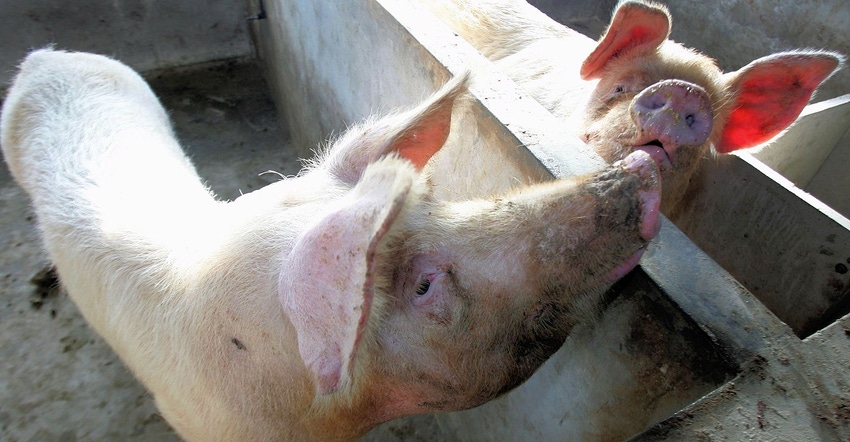Key to controlling ASF is biosecurity, biosecurity, biosecurity
The FAO is particularly concerned about small-holder farmers in China, where pig production is a part of the rural culture.
December 9, 2019

African swine fever continues its steady, all-encompassing spread across Asia. When it is identified in a new region, the pork industries in that region change immediately and dramatically. While U.S. pork production differs significantly from Asia's swine industry, the chief veterinary officer for the United Nations Food and Agriculture Organization says we can learn important lessons about this global disease threat from other countries' experiences.
"More people live in urban than rural environments throughout the world," says Juan LuBroth, DVM, and CVO for the FAO. The ASF expert was a keynote speaker at the U.S. Animal Health Association annual meeting earlier this fall, where he shared his ASF experiences with the veterinarians, producers and government officials in attendance. Headquartered in Rome, the FAO's primary focus is on people's livelihoods, elimination of hunger, food security, sustainable agriculture and food production.
More opportunities but more threats, too
"Consumption of livestock products is growing rapidly – as countries become wealthier, they want more animal protein products," LuBroth says. The outcome is expanded livestock production in those countries, as well as increased imports and exports. While this scenario is good for domestic consumption and global economies, it also amplifies the threat of spreading foreign animal diseases like ASF. The FAO has projects all over the world that focus on global and local impacts.
The FAO is particularly concerned about small-holder farmers in China, where pig production is a part of the rural culture. Going back to the last century, Chairman Mao Zedong encouraged every family to have one or two pigs, LuBroth explains.
"Understanding pig production is quite important," he says. "There is intensive, semi-intensive and extensive pig production. In China, 67% of swine production is backyard, or extensive production." That vast and diverse pig population has been a major contributor to the rapid spread of ASF.
Earlier this year, the FAO published a Food Outlook special section on ASF. The report outlines the spread of ASF in Asia, actions taken by each infected country and FAO recommendations and actions. As LuBroth points out, it's not just pig farmers who are affected.
"The sharp decline in production will impact the amount of soy or corn that is consumed as animal feed," he says. "Exports of soy and corn will decline, creating price and market disruption."
Devastating consequences
When ASF was identified in the Russian Federation, FAO was encouraging the European Union to focus on diagnostic and control measures, and create directives for member-states. A global framework was developed for the control of transboundary diseases, to synergize and coordinate efforts. The FAO also wrote a risk analysis anticipating the outcome if ASF were to enter China.
"We knew there would be devastating consequences for China and for other regions," LuBroth says. "Transport-associated routes would be the most relevant pathways, along with illegal imports of food. We knew ASF would likely become endemic."
A consortium was established to work on a vaccine, but the double-stranded ASF virus has made vaccine development challenging. LuBroth is aware vaccines are available in China "that are not necessarily approved by the government," he says. "They do not meet international standards and can exacerbate the problem."
The wild boar population also remains a major concern. "There is a lot we know about wild boar habitat and behavior: The average-size litter from a wild sow is six pigs, but eight pigs survive," LuBroth jokes.
The other point of entry for ASF is through pork products, so understanding a country's culture is a key point, LuBroth says. It's important to understand the country's emphasis on biosecurity, or lack thereof.
Promising tools
The FAO and its standing group of experts are building capacity to better address ASF and other foreign animal diseases through epidemiology training, lab training, collection and identification and diagnosis.
"A pocket-held PCR test to continue the validation process with ASF has worked very well," LuBroth says. "Detection is not the issue, however. Reporting, disease containment and understanding the markets are the issues. The key to controlling African swine fever is biosecurity, biosecurity and biosecurity, and not necessarily in that order."
Source: U.S. Animal Health Association, which is solely responsible for the information provided, and wholly owns the information. Informa Business Media and all its subsidiaries are not responsible for any of the content contained in this information asset.
You May Also Like



